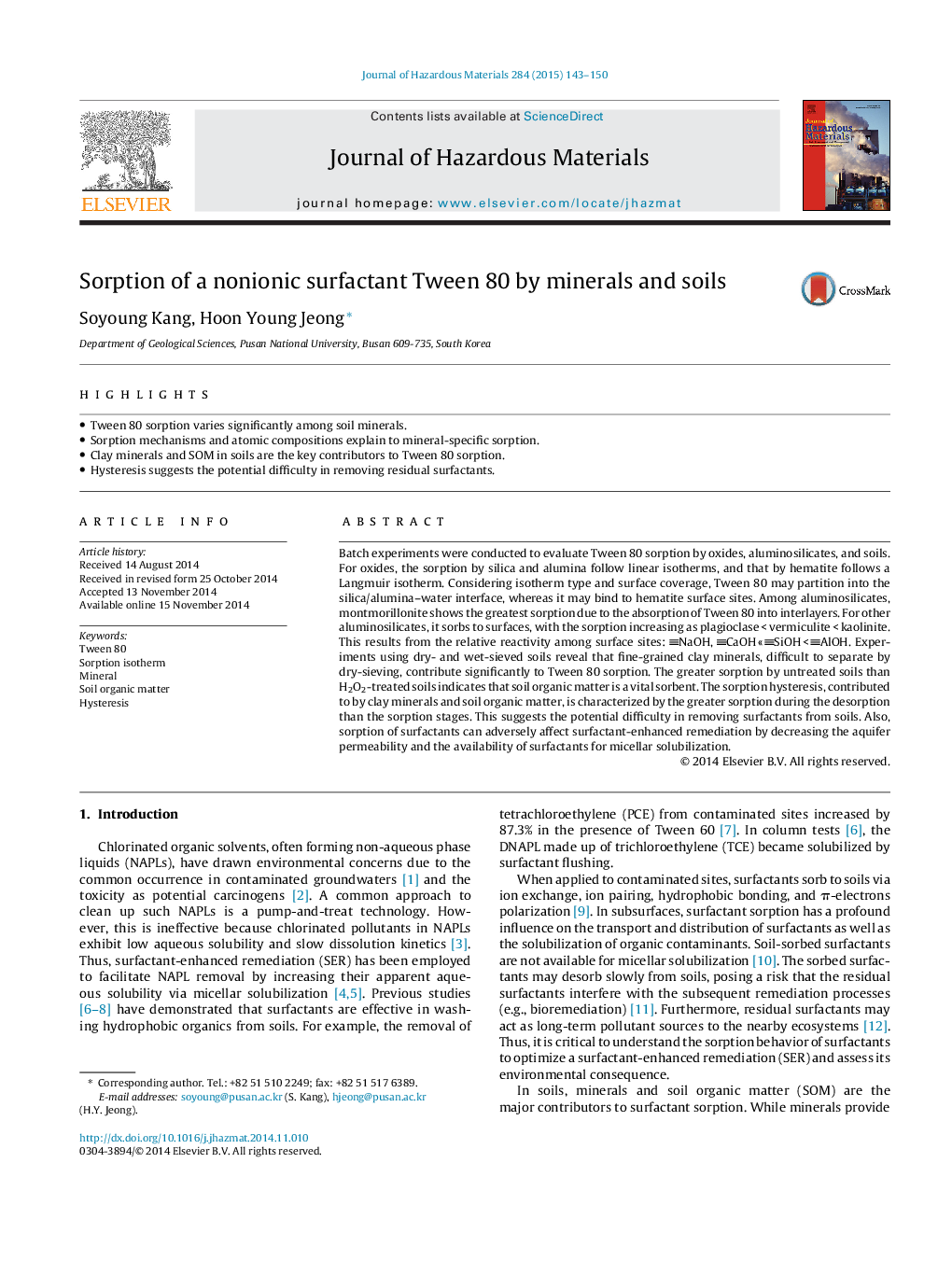| Article ID | Journal | Published Year | Pages | File Type |
|---|---|---|---|---|
| 576222 | Journal of Hazardous Materials | 2015 | 8 Pages |
Abstract
Batch experiments were conducted to evaluate Tween 80 sorption by oxides, aluminosilicates, and soils. For oxides, the sorption by silica and alumina follow linear isotherms, and that by hematite follows a Langmuir isotherm. Considering isotherm type and surface coverage, Tween 80 may partition into the silica/alumina-water interface, whereas it may bind to hematite surface sites. Among aluminosilicates, montmorillonite shows the greatest sorption due to the absorption of Tween 80 into interlayers. For other aluminosilicates, it sorbs to surfaces, with the sorption increasing as plagioclase < vermiculite < kaolinite. This results from the relative reactivity among surface sites: NaOH, CaOH << SiOH < AlOH. Experiments using dry- and wet-sieved soils reveal that fine-grained clay minerals, difficult to separate by dry-sieving, contribute significantly to Tween 80 sorption. The greater sorption by untreated soils than H2O2-treated soils indicates that soil organic matter is a vital sorbent. The sorption hysteresis, contributed to by clay minerals and soil organic matter, is characterized by the greater sorption during the desorption than the sorption stages. This suggests the potential difficulty in removing surfactants from soils. Also, sorption of surfactants can adversely affect surfactant-enhanced remediation by decreasing the aquifer permeability and the availability of surfactants for micellar solubilization.
Related Topics
Physical Sciences and Engineering
Chemical Engineering
Chemical Health and Safety
Authors
Soyoung Kang, Hoon Young Jeong,
